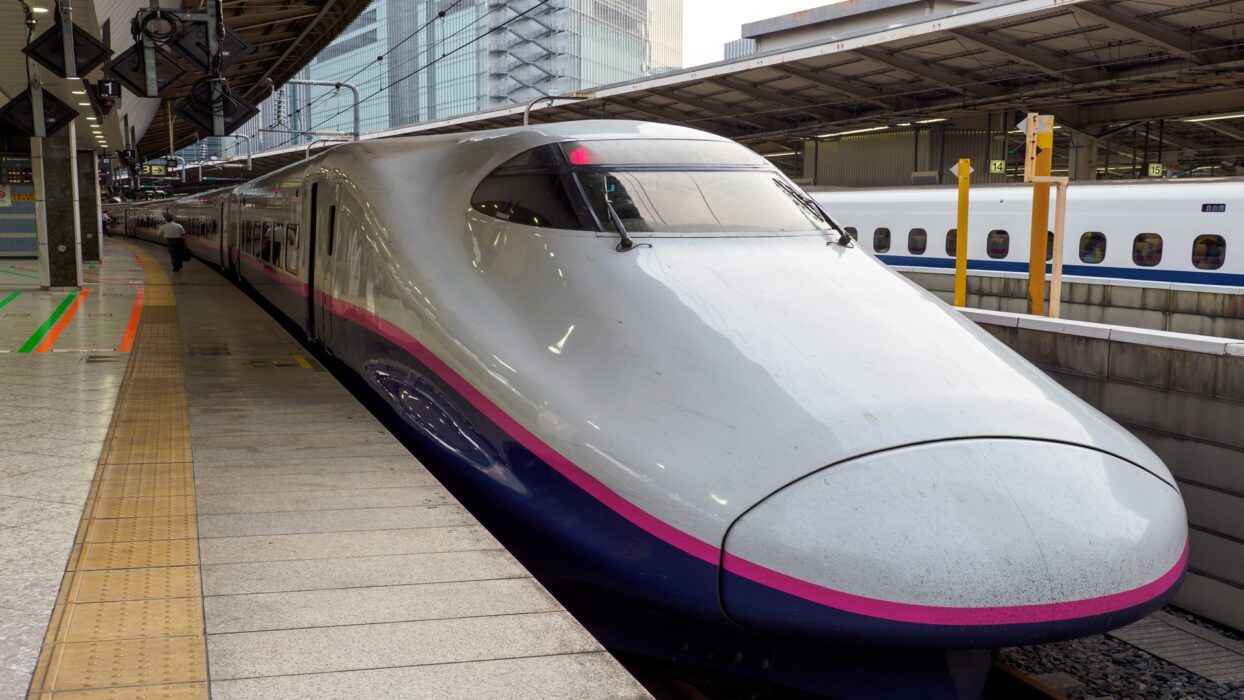Welcome to Shibamata: Tokyo’s Hidden Gem
Step into the enchanting world of Shibamata, a charming neighborhood tucked away in Tokyo that feels like a delightful time capsule. With its retro vibes, rich history, and lively local culture, Shibamata offers a unique escape from the bustling city life. This quaint area is not just a feast for the eyes but also a treasure trove of experiences waiting to be uncovered. From traditional festivals that light up the streets to hidden temples steeped in folklore, the allure of Shibamata is undeniable.
Imagine wandering through narrow streets lined with nostalgic shops, savoring delicious local delicacies, and soaking in the vibrant atmosphere that comes alive during seasonal celebrations. Whether you’re a history buff, a foodie, or someone looking to immerse yourself in authentic Tokyo culture, Shibamata is a destination that promises to captivate your heart.
Discovering Shibamata: A Retro Tokyo Treasure
As you stroll through the Shibamata neighborhood, you’ll be greeted by an ambiance that whispers stories of the past. The streets are adorned with traditional wooden buildings, and the air is filled with the scents of street food that beckon you to indulge. This charming area is often overshadowed by its more famous counterparts, making it a perfect spot for travelers seeking something a bit off the beaten path.
Fans of Japanese cinema will feel an immediate connection to Shibamata, as it served as the backdrop for the beloved film series “Otoko wa Tsurai yo.” The films, which follow the misadventures of a lovable but hapless man, showcase the essence of Shibamata’s charm and community spirit. Visiting the locations featured in these movies allows you to step into the shoes of the characters and experience the nostalgia that has made this neighborhood a beloved part of Tokyo’s cultural fabric.
Historical Context and Folklore of Shibamata
Shibamata’s history is as rich as its culture, with roots dating back to the Edo period. Originally a small fishing village, it evolved into a bustling town known for its beautiful scenery along the Edogawa River. The area is home to the renowned Shibamata Taishakuten Temple, which has stood the test of time and continues to be a spiritual haven for locals and visitors alike.
Legends abound in Shibamata, especially surrounding the temple. One popular tale speaks of a divine dragon that resides in the river, blessing those who come to pay their respects. This folklore adds a mystical layer to your visit, inviting you to ponder the stories that have shaped this unique locale. As you explore Shibamata, keep an ear out for whispers of the past that linger in the air.
From its humble beginnings to its current status as a beloved neighborhood, Shibamata’s journey is a testament to the resilience and spirit of its community. The blend of history and modernity creates a captivating atmosphere that enchants everyone who steps foot here.
Shibamata Temple: A Spiritual Retreat
No visit to Shibamata would be complete without a stop at the Shibamata Taishakuten Temple. This stunning temple, with its intricate wooden carvings and serene gardens, serves as a spiritual retreat for many. As you approach the temple, you’ll be struck by the peaceful ambiance that surrounds it, making it a perfect place for reflection and tranquility.
Visitors often participate in the rituals held at the temple, such as lighting incense and offering prayers for good fortune. The temple is particularly famous for its beautiful carvings of Buddhist deities, each telling a story of its own. Take your time to explore the grounds, and don’t forget to capture the beauty of the temple through your lens—it’s a fantastic spot for Shibamata photography.
Festivals and Traditional Events in Shibamata
Shibamata comes alive during its traditional festivals, where the community gathers to celebrate its rich culture. One of the highlights is the Katsushika Iris Festival, held every June when the blooming irises paint the landscape in vibrant colors. This festival not only showcases the beauty of the flowers but also features traditional performances, food stalls, and local crafts, making it a must-visit for anyone in the area.
Another spectacular event is the Noryo Fireworks Festival, which lights up the summer sky with dazzling displays. Held in July, this festival attracts visitors from all over Tokyo, creating a lively atmosphere filled with laughter, music, and delicious snacks. If you’re planning to visit during these events, be sure to arrive early to secure a good spot and immerse yourself in the festivities.
Participating in these local celebrations is a fantastic way to connect with the community and experience the heart of Shibamata. Bring your friends and family along to enjoy the festivities together, and don’t forget to try the local treats available at the stalls!
Culinary Delights: A Taste of Shibamata
Food lovers, rejoice! Shibamata is a culinary paradise waiting to be explored. The neighborhood is brimming with local eateries and street food stalls that offer a delightful taste of traditional Japanese cuisine. One must-try dish is shibamata sweet potato, a local specialty that boasts a rich, sweet flavor. You can find it at various street vendors, often grilled to perfection and served warm—perfect for a quick snack as you wander the charming streets.
Another local favorite is neri yaki, a type of grilled rice cake that is both chewy and flavorful. This delicious treat is often enjoyed during festivals, making it a fantastic way to connect with the local culture. Don’t forget to pop into a traditional wagashi shop, where you can sample exquisite Japanese sweets that are as beautiful as they are tasty. These delicate confections often reflect seasonal themes and are perfect for a sweet treat after a day of exploration.
For those seeking a more substantial meal, head to one of the cozy izakayas (Japanese pubs) in the area, where you can enjoy a range of dishes from grilled skewers to hearty ramen. The atmosphere is lively, and the friendly locals are always eager to share their recommendations. Pair your meal with a refreshing glass of local sake or a cold beer to complete the experience!
Shibamata’s Hidden Gems: Off the Beaten Path
While Shibamata is known for its main attractions, there are plenty of hidden gems waiting to be discovered. Tucked away in quiet corners are small temples and shrines that offer a peaceful retreat from the hustle and bustle. One such spot is Daikyoji Temple, a lesser-known temple that exudes tranquility. Its serene garden is perfect for a moment of reflection, and you may even encounter a few friendly cats lounging in the sunshine!
Art enthusiasts should not miss the Shibamata Art Museum, which showcases local artists and their works. The museum is a small but charming space filled with unique pieces that capture the essence of Shibamata’s culture. Engaging with the art and artists can provide a deeper understanding of the community’s creative spirit.
For a unique experience, seek out the Shibamata Bonsai Garden, where you can marvel at meticulously crafted bonsai trees. This hidden gem offers workshops for those interested in learning the art of bonsai, making it a fantastic way to connect with local traditions.
A Day in Shibamata: Itinerary for Adventurers
Planning a day trip to Shibamata? Here’s a suggested itinerary to help you make the most of your visit!
Morning:
- Start your day with a visit to the Shibamata Taishakuten Temple. Arrive early to enjoy the peaceful atmosphere and take some stunning photographs of the temple grounds.
- Afterward, explore the nearby Shibamata Park, where you can enjoy a leisurely stroll along the Edogawa River while taking in the natural beauty.
Lunch:
- Head to a local izakaya or street food stall for a taste of shibamata sweet potato and neri yaki. Don’t forget to grab a cup of matcha to wash it down!
Afternoon:
- Visit the Shibamata Art Museum to appreciate local artwork and perhaps pick up a unique souvenir.
- Take a stroll through the hidden pathways to discover Daikyoji Temple and the Bonsai Garden, soaking in the serene atmosphere.
Evening:
- As the sun sets, make your way to the Noryo Fireworks Festival (if you’re visiting in July) or enjoy a quiet dinner at a local izakaya, sharing stories with fellow travelers and locals alike.
With this itinerary, you’ll experience the best of Shibamata, from its spiritual sites to its culinary delights—all while soaking up the charming atmosphere that makes this neighborhood so special.
Shopping in Shibamata: Treasures Await
Shibamata is a treasure trove for shoppers seeking unique finds. The main shopping street, Shibamata Yanagimachi Street, is lined with quaint shops selling everything from traditional crafts to vintage clothing. Here, you can find handmade pottery, calligraphy supplies, and beautiful fabric goods that make perfect souvenirs.
If you’re on the hunt for vintage items, be sure to check out the small second-hand shops scattered throughout the neighborhood. You might stumble upon retro clothing, quirky accessories, or even rare collectibles that tell a story of their own. Engaging with shop owners can lead to fascinating conversations about the history of their products, adding a personal touch to your shopping experience.
Don’t forget to visit the local markets, where you can find fresh produce and artisanal goods. These markets often showcase seasonal items, so you can take home a taste of Shibamata! Whether you’re looking for a unique keepsake or simply want to soak in the local shopping culture, Shibamata has something for everyone.
Transportation Tips: Getting to Shibamata
Getting to Shibamata is a breeze, thanks to Tokyo’s efficient public transportation system. The easiest way to reach this charming neighborhood is by taking the Keisei Kanamachi Line to Shibamata Station. From there, it’s just a short walk to the main attractions.
Alternatively, if you’re coming from central Tokyo, you can take the JR Joban Line to Katsushika Station and transfer to the Keisei Line. This route offers a scenic view of the city as you make your way to Shibamata.
For those who prefer a more leisurely approach, consider renting a bicycle to explore the area at your own pace. The riverside paths are perfect for cycling, allowing you to soak in the beautiful scenery along the Edogawa River. Plus, it’s a fun way to burn off those delicious local treats!
Practical Information for Travelers
Before you set off on your Shibamata adventure, here are some essential tips to keep in mind:
- Opening Hours: Most attractions in Shibamata are open from 9 AM to 5 PM, but be sure to check specific hours for temples and shops.
- Etiquette: When visiting temples, remember to be respectful. Remove your shoes where required and follow local customs.
- Safety: Shibamata is generally a safe area, but like any travel destination, it’s wise to stay aware of your surroundings and keep your belongings secure.
If you have any questions or need assistance, don’t hesitate to ask the friendly locals—they’re always happy to help!
Outdoor Activities: Enjoying Shibamata’s Natural Beauty
Shibamata isn’t just about history and culture; it also offers beautiful outdoor spaces perfect for relaxation and recreation. The Edogawa River is a fantastic spot for a leisurely walk or a picnic. The riverside paths are lined with cherry blossom trees, making it an idyllic location during the spring season.
For those looking to be a bit more active, consider renting a kayak to paddle along the river. This unique perspective allows you to appreciate the natural beauty of Shibamata while enjoying a fun workout. You might even spot some local wildlife along the way!
In addition to riverside walks, Shibamata has several parks where you can unwind. Shibamata Park features playgrounds and open spaces, making it a great place for families to enjoy a day outdoors. Bring a blanket, pack a lunch, and soak in the sun while surrounded by nature.
Sustainability and Conservation in Shibamata
Shibamata is committed to preserving its cultural heritage and natural environment. Many local businesses are actively involved in sustainability initiatives, such as reducing plastic waste and promoting eco-friendly practices. When visiting, consider supporting these local efforts by choosing shops and restaurants that prioritize sustainability.
Travelers can also practice responsible tourism by respecting the environment—dispose of waste properly, stick to designated paths, and be mindful of wildlife. Engaging with local conservation projects or community events can enhance your experience and help you connect with the community.
Fun Facts About Shibamata
Did you know that Shibamata is home to the Shibamata Taishakuten Temple, which is over 1,000 years old? It’s one of the oldest temples in Tokyo and a must-visit for history buffs!
Another fun tidbit: Shibamata is famous for its “Shibamata Cat” legend, where locals believe that a cat living near the temple brings good luck to those who encounter it. Keep your eyes peeled—you might just spot this lucky feline!
Lastly, the area has been featured in numerous films and television shows, making it a beloved spot for both locals and visitors. Its nostalgic charm continues to inspire artists and filmmakers alike!
Commonly Asked Questions (FAQs)
What is the best time to visit Shibamata?
The best time to visit Shibamata is during the spring (March to May) when cherry blossoms bloom, or in the fall (September to November) when the foliage turns vibrant shades of red and orange. These seasons offer beautiful scenery and a lively atmosphere.
Are there any entry fees for the temples?
Most temples in Shibamata, including Shibamata Taishakuten, do not charge an entry fee. However, donations are appreciated to help maintain the grounds and facilities.
Can I find vegetarian or vegan food in Shibamata?
Yes! Many local eateries offer vegetarian and vegan options, especially at traditional restaurants. Be sure to ask for recommendations from locals, who are often happy to point you in the right direction!
Shibamata Awaits!
With its rich history, vibrant culture, and delightful culinary scene, Shibamata truly is a hidden gem in Tokyo just waiting to be explored. Whether you’re wandering through ancient temples, savoring local delicacies, or enjoying the natural beauty of the Edogawa River, Shibamata offers a unique experience that captures the heart of Japan.
So pack your bags, grab your camera, and get ready to uncover the charm of this enchanting neighborhood. Shibamata is calling, and you won’t want to miss out on the adventure!




















